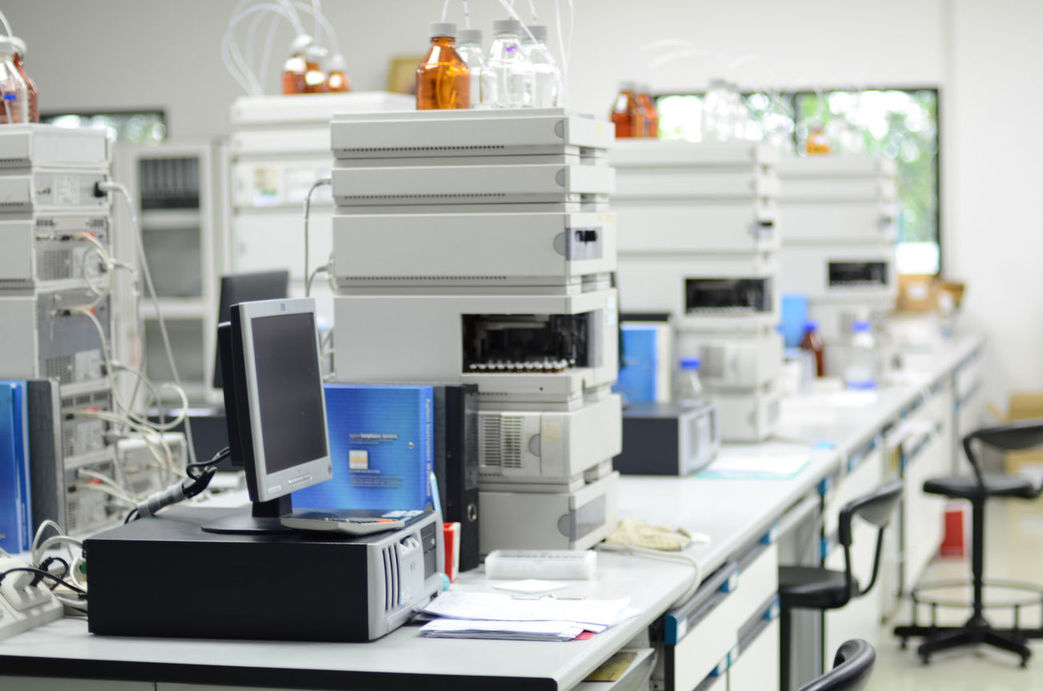Glycoinformatics-assisted GPI-anchored Site Prediction Service
Unlocking Precision: Predicting GPI-Anchored Sites with Glycoinformatics Excellence
Glycosylphosphatidylinositol (GPI) anchoring is a common post-translational modification, mainly from extracellular eukaryotic proteins. GPI is partially attached to the carboxyl terminus of peptides after proteolytic cleavage of C-terminal propeptides and is involved in recognition and signaling processes. At CD BioGlyco, we are fully equipped with glycoinformatics technology to provide Structure or Site Analysis/Prediction Services to various types of compounds or glycosylation processes.
Here, we utilize informatics methods to identify GPI-anchored proteins and provide GPI-anchored site prediction services to our clients to help them distinguish GPI-anchored proteins and determine GPI-anchored site locations.
Construction of GPI-anchored protein database
Taking proteins with GPI-anchored site annotations as a prerequisite, proteins containing known GPI-anchored sites are collected to establish a GPI-anchored protein database, which is examined using the literature, and the presence of GPI anchors and the location of anchor sites have been confirmed.
The proteins in the database are grouped, and the division of the groups is based on the sequence identity situation. Each group consists of one or two proteins without any detectable similarity of sequences in different groups. In distinguishing GPI-anchored proteins, a computer program is used to evaluate the prediction performance.
Prediction of GPI-anchored sites
To characterize where the GPI-anchored sites are located, we use the hidden Markov model (HMM). The HMM is a graphical model consisting of states, where each state represents the position of the sequence.
Using the HMM model, we identify and predict the site where the C-terminal sequence of a protein begins. At the same time, we use the sequences of known GPI-anchored sites in the database for cross-validation and employ algorithms to decode the data.
Currently, we successfully predict the set of experimentally known GPI-anchored proteins, and most of the predicted GPI-anchored sites are formed by five typical residues: cysteine, aspartic acid, glycine, asparagine, and serine.
In addition, when making predictions for each protein, we use a computerized technique to assess the threshold specificity. Depending on the specificity value, the GPI anchoring potential of the protein can be assessed. Clients predict the location of the GPI-anchored site based on the specificity value as well as the specifics of the experiment.

Publication Data
Technology: HMM and support vector machine (SVM)
Journal: BMC Bioinformatics
IF: 2.9
Published: 2008
Results: In this article, the authors present PredGPI, a prediction method that can effectively predict the presence of GPI anchors and the location of ω sites by coupling HMM and SVM. During the experiments, the authors combined the probabilistic output of the HMM with information from the entire sequence, the carboxy-terminal region and the amino-terminal region, and utilized the SVM to fully characterize the overall composition of the protein sequence, such as the characterization of the N-terminal region of the signal peptide, as well as the characterization of the C-terminal region, which contains the cleaved GPI-anchor signal. Based on experimental results, PredGPI was found to correctly replicate the results of previously published high-throughput experiments with a much lower false-positive prediction rate, making it a cost-effective, fast, and accurate method for screening the entire proteome.
 Fig.1 HMM at the protein GPI-anchored ω site. (Pierleoni, et al., 2008)
Fig.1 HMM at the protein GPI-anchored ω site. (Pierleoni, et al., 2008)
Applications
- Using glycoinformatics to predict GPI-anchored sites, researchers can identify proteins that may be attached to cell membranes, which is particularly important for understanding the function of these proteins. For example, certain receptors, enzymes, or adhesion molecules depend on their membrane localization to function.
- Abnormal GPI anchoring processes may be associated with a variety of diseases, including parasitic infections, neurodegenerative diseases, and other metabolic disorders. Prediction of GPI-anchored sites using glycoinformatics techniques provides insight into the molecular mechanisms and potential therapeutic targets for these diseases.
- The prediction of GPI-anchored sites using glycoinformatics techniques can help researchers design recombinant proteins that can be specifically localized to cell membranes, facilitating the development of vaccines, diagnostic tools, and other biotechnology products.
Advantages
- We integrate multiple database resources and utilize powerful computational resources to quickly process and analyze large amounts of data to improve the efficiency of GPI-anchored site prediction and the accuracy of prediction.
- Our team gathers experts in the fields of computational biology, cheminformatics, and bioinformatics to quickly respond to the needs of pharmaceutical, food, agriculture, and other industries for GPI anchor protein research and provide detailed GPI-anchored site prediction programs.
- The GPI-anchored site prediction service we provide ensures client satisfaction while allowing for customized analysis and annotation according to client needs.
Frequently Asked Questions
- What is a GPI-anchored site?
- A GPI-anchored site is a specific site on a protein molecule through which a protein can be anchored to the cell membrane by GPI. GPI anchors are complex glycolipid structures that attach to proteins and help them embed themselves in cell membranes. Correct identification of GPI-anchored sites is important for understanding the function of the proteins and their distribution in the cell membrane.
- What types of proteins is GPI-anchored site prediction applicable to?
- GPI-anchored site prediction applies to all types of eukaryotic proteins, especially those that are predicted to potentially be anchored to the cell membrane by GPI. Specific categories include:
- Cell surface antigens and receptors: e.g. some proteins on the surface of immune cells.
- Enzymes: some enzymes that perform functions outside the cell membrane.
- Adhesion molecules: assist in intercellular or cell-matrix adhesion.
- Parasitic body membrane proteins: e.g., surface proteins of some parasites.
CD BioGlyco has mastered the world's leading glycoinformatics technology and formed a multidisciplinary team of professionals to provide Structure and Function Prediction Services of glycan biomolecules to our clients. We are constantly innovating to improve our data integration and analysis capabilities to ensure high efficiency and accuracy in the prediction of GPI-anchored sites. Please feel free to contact us if you have any questions, our staff will reply to you promptly.
Reference
- Pierleoni, A.; et al., PredGPI: a GPI-anchor predictor. BMC Bioinformatics. 2008, 9: 392.
For research use only. Not intended for any diagnostic use.
Quick Links
Related Services



 Fig.1 HMM at the protein GPI-anchored ω site. (Pierleoni, et al., 2008)
Fig.1 HMM at the protein GPI-anchored ω site. (Pierleoni, et al., 2008)


